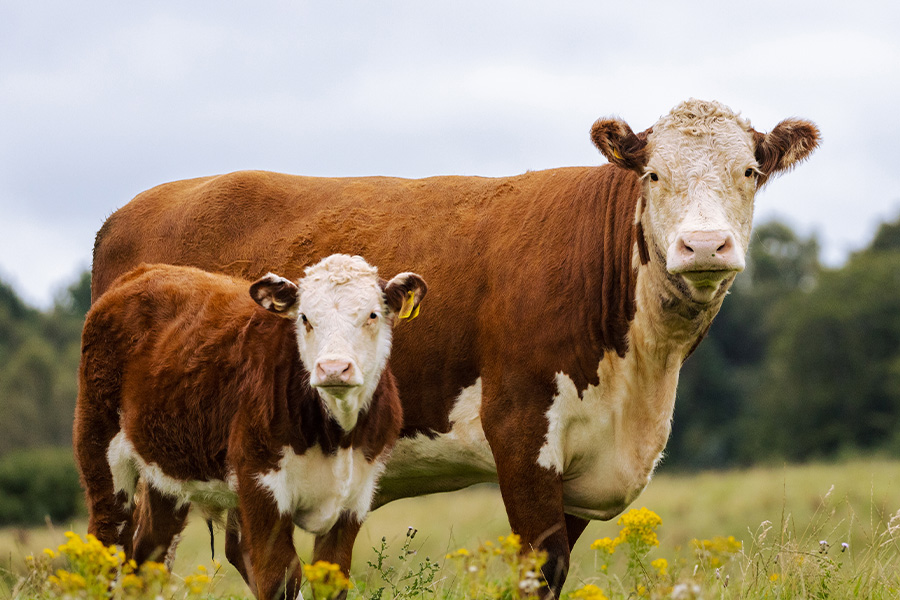Beef
-

Drought does not develop overnight but progressively over time. Proper management during a drought period can make or break a producer’s ability to stay in the cattle business. One main concern during a drought period is feeding and nutrition of the cow herd. Several problems could arise due to drought conditions. A good producer should stay alert for warning signs and avoid potentially damaging situations.
Carole Knight
|
-

Water is the most important nutrient for cattle. It accounts for 50 to 80 percent of an animal’s weight and is involved in every physiological process. Cattle cannot adapt to water restriction and feed intake greatly decreases if water is restricted. Water availability and quality can become a major issue during a drought. It is important to check water sources frequently for water availability and quality during a drought.
Lawton Stewart, Ted G. Dyer, and Johnny Rossi
|
-

Adjust rations for the dry matter (DM) content of each feed, especially when wet feeds, such as silage, are fed. Small changes in the DM content will change the nutrient profile of the ration. The potential results of not monitoring the DM content of wet feeds and adjusting rations accordingly are a combination of problems including decreased animal performance and feed efficiency and increased health problems and feed cost.
John K. Bernard
|
-

Sprouted grains are usually considered unsuitable for milling or distilling; however, they can serve as an excellent source of nutrients for cattle.
Wheat, which is commonly used for human consumption, is usually priced higher than other feedstuffs and is typically not utilized for livestock consumption. Sprouted wheat, however, is discounted heavily at the mill and may be economically feasible to incorporate into beef cattle rations.Lawton Stewart
|
-

This brief management guideline provides producers with specific management tactics that may minimize the potential for short- and long-term problems. These tactics, categorized in order of early, advanced, and severe drought stages, are based on specific characteristics including water loss, forage growth, and rainfall.
R. Curt Lacy, Dennis Hancock, and Johnny Rossi
|
-

C 859
Selecting a Beef Breed
New cattle producers frequently ask, “Which breed should I choose?” This question brings cold chills to many knowledgeable cattle producers and excitement to just as many enthusiastic breeders. The diversity of resources and management capabilities of any operation makes this question difficult to answer.
Carole Knight and Ted G. Dyer
|
-

The number of calves sold is a major source of income from a cow/calf operation. A high percent calf crop increases profit. Reproductive efficiency is the first factor to consider in a breeding program. A beef cow must conceive in the first 40 to 60 days of the breeding season, have a live calf unassisted, breed back to calve every 12 months, and raise a calf that is heavy enough to be profitable. To accomplish this, she must be managed correctly.
Carole Knight and Ted G. Dyer
|
-

Clean water for cattle is important for animal health and production and water delivery systems require routine maintenance and monitoring.
Raymond Fitzpatrick, Martin Wunderly, Shanna Reynolds, Robyn Stewart, and Pedro Fontes
|
-

Autumn and winter are busy seasons for beef cattle producers, and many times grazing and cattle management are not as tightly regulated as in other times of the year. Many Southeastern cattle operations include pastureland that encompasses or borders oak timbers; most North American oak trees are considered toxic. Therefore, when cattle venture into timber land in search of grazing, there is an increased chance that acorns will be consumed and toxicosis may occur. The purpose of this bulletin is to educate producers on the symptoms and prevention of acorn toxicosis in beef cattle.
Jacob R. Segers and Lawton Stewart
|